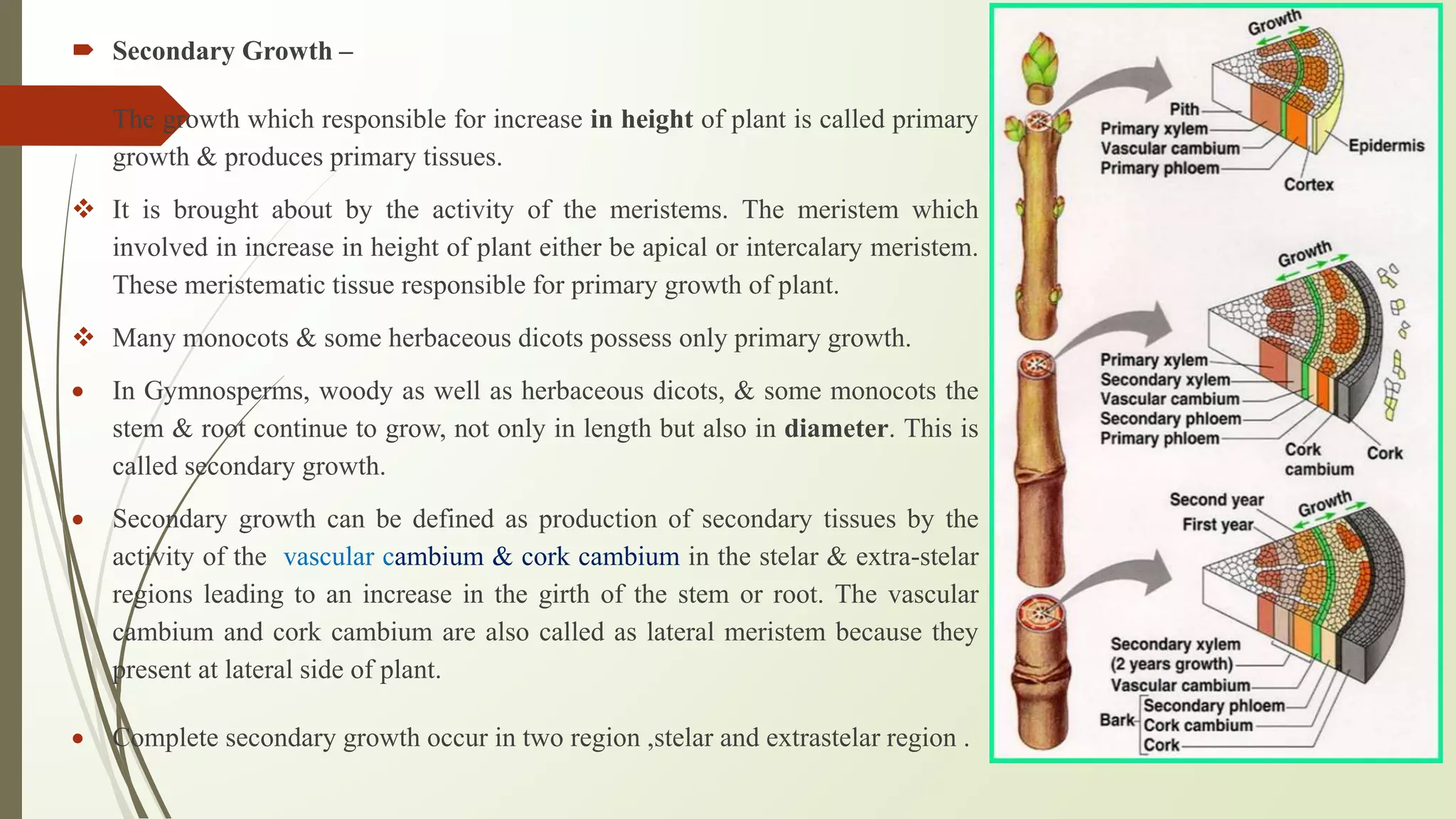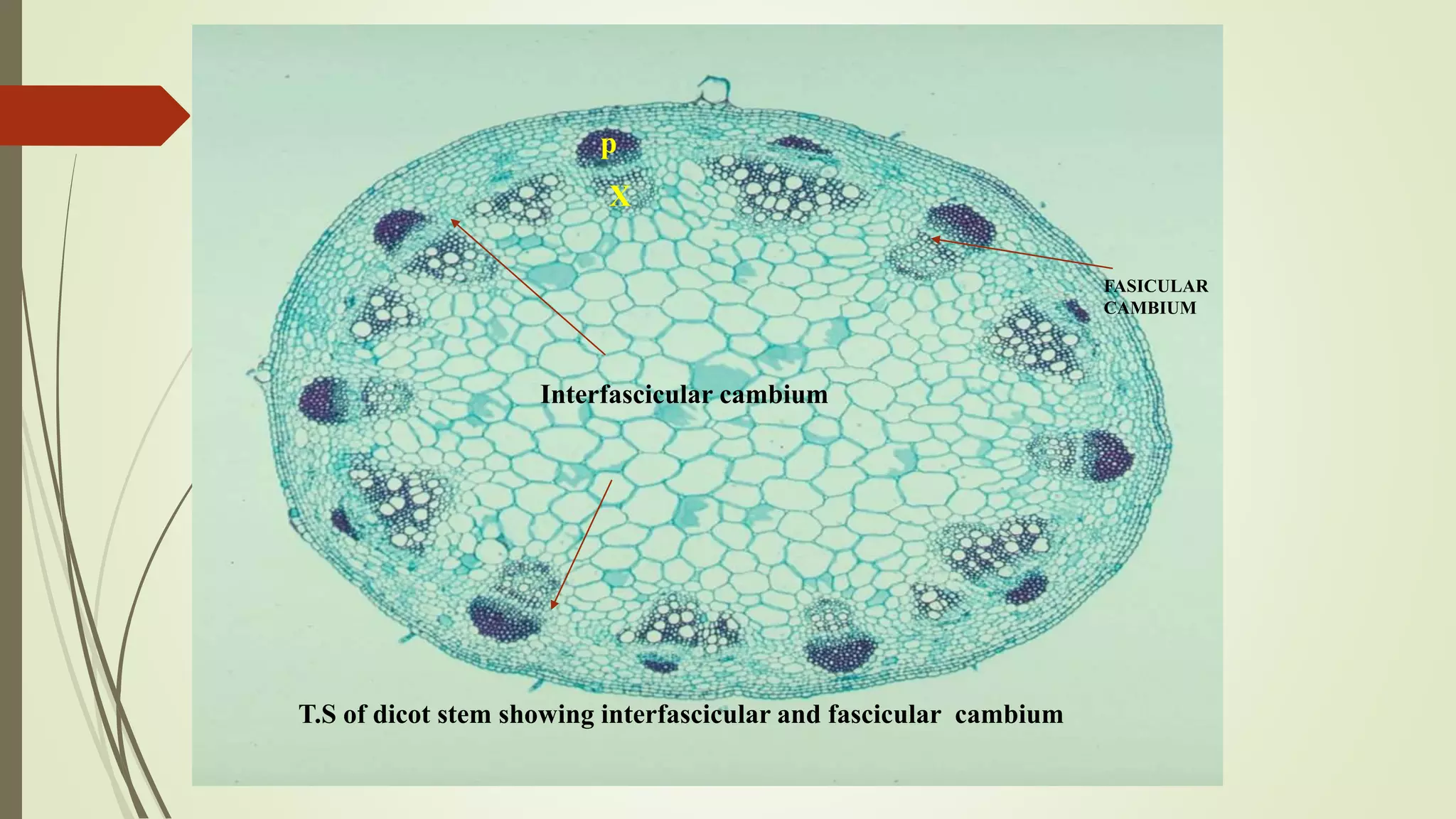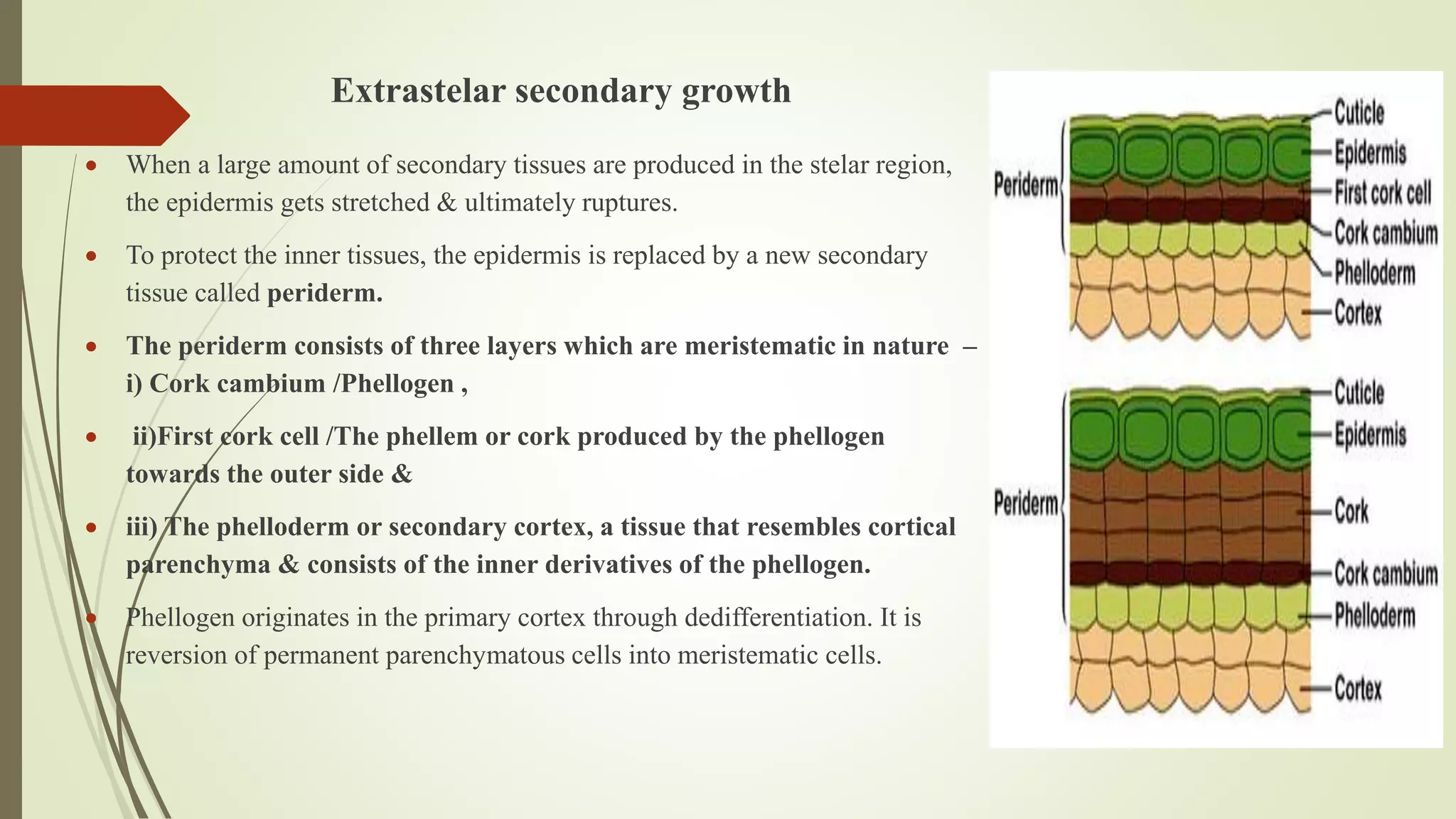Secondary growth occurs in woody stems and roots through the activity of lateral meristems like the vascular cambium and cork cambium. This results in an increase in the stem or root diameter. The vascular cambium divides to produce secondary xylem internally and secondary phloem externally. In dicots, the vascular cambium forms a complete ring. As the stem grows in diameter, tissues inside like pith and medullary rays are compressed. The epidermis may rupture and be replaced by a protective periderm tissue like cork. Lenticels allow gas exchange through the impermeable cork layers. Secondary meristems also function in wound healing through wound cambium and cork formation.















